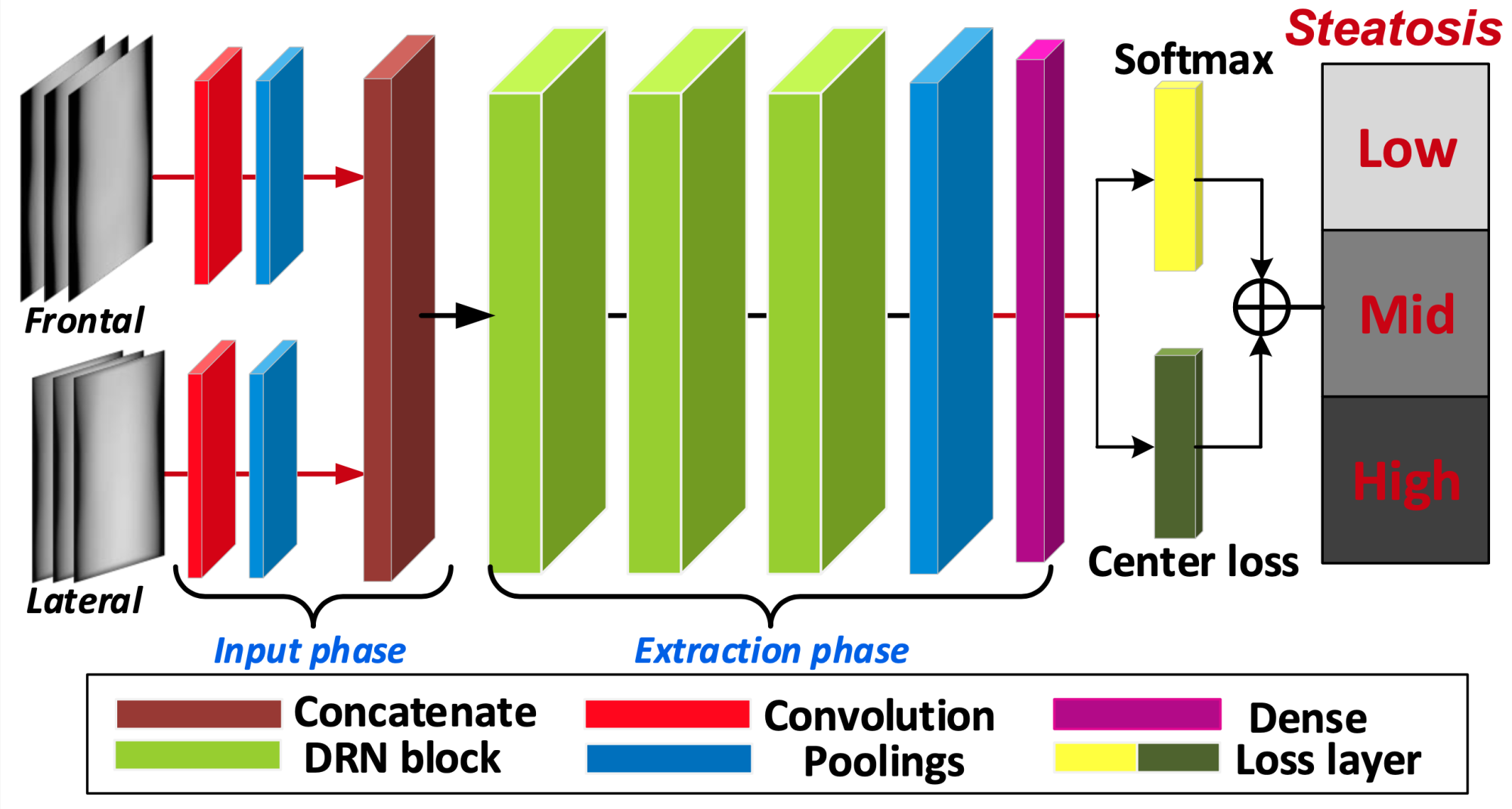shape-haptic-steatosis
3D optical body surface scan technology.
Fat accumulation in the liver cells can increase the risk of cardiac complications and cardiovascular disease mortality. Therefore, a way to detect hepatic steatosis quickly and accurately is critically important. However, current methods, e.g., liver biopsy, magnetic resonance imaging, and computerized tomography scan, are subject to high cost and/or medical complications. In this paper, we propose a deep neural network to estimate the degree of hepatic steatosis (low, mid, high) using only body shapes. The proposed network adopts dilated residual network blocks to extract refined features of input body shape maps by expanding the receptive field. Furthermore, to classify the degree of steatosis more accurately, we create a hybrid of the center loss and cross entropy loss to compact intra-class variations and separate inter-class differences. We performed extensive tests on the public medical dataset with various network parameters. Our experimental results show that the proposed network achieves a total accuracy of over 82 % and offers an accurate and accessible assessment for hepatic steatosis.
- The architecture of our network

Participants: Qiyue Wang, Xiaoke Zhang, Fang Jin, James Hahn

